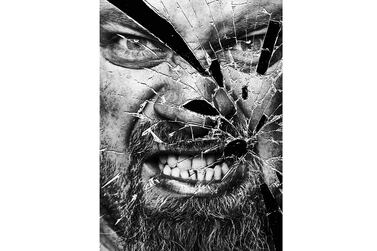Beating Eating Disorders Awareness Week is from March 2 to 8, and it's worth noting that while body-image issues are traditionally regarded as a problem faced by women and adolescent girls, men and boys are also susceptible to unhealthy and unrealistic expectations about their weight, and body size and shape. Worryingly, these concerns have the potential to develop into serious eating disorders, in addition to other mental illnesses such as depression and anxiety.
What is an eating disorder?
In simple terms, an eating disorder often develops as an unhealthy coping mechanism to deal with overwhelming emotions and circumstances. Left untreated, it can have a devastating impact on a person's physical and emotional well-being, but stigma persists, deterring many men and boys from seeking the support they need.
Studies cited by British eating disorders charity Beat suggest that as many as one in four people with an eating disorder are male, taking into account those who aren't being diagnosed.
Social media plays a part
Like women, men can struggle with their appearance, and living in today's increasingly connected society, with a growing obsession with social media platforms such as Instagram, Facebook and Snapchat, it is easy to understand why.
Men are proving to be as vulnerable as women to the constant bombardment of unattainable and negative images regarding body shape, which can place untold pressure on them to conform to a body norm. This fixation on appearance and social acceptance can lead to low self-esteem, depression, anxiety and a lack of self-confidence – the perfect breeding ground for eating disorders. Unfortunately, this trend shows no sign of abating.
Before social media became so rampant, a 2012 study on how the media influenced the rise of male body image problems, conducted by the University of the West of England, found that almost 30 per cent of men think about their appearance at least five times a day. Media images all too often portray muscular and lean physiques, which can perpetuate the desire in some to dramatically change their bodies through weight loss or gain, and muscle building.
Many can refute moderation, resorting to over-exercising and steroids in their quest to achieve a “superhero” physique. Having said that, several celebrities, too, have confessed to suffering from an eating disorder, from Elton John and Dennis Quaid to Russell Brand and Zayn Malik.
Beyond beauty
Research by Psychology Today reported that women are less concerned about a man's body image than men perceive them to be. It's important, however, to highlight that eating disorders are not a choice, and are not solely linked to sociocultural factors such as appearance and beauty. They are serious mental illnesses that can triggered by a host of genetic, biological, social and environmental causes.
For example, psychosocial triggers can increase the likelihood of developing an eating disorder, whether you're male or female. Such triggers include divorce, death of a spouse, other physical and mental illnesses, age-related weight gain, parenting transitions and retirement. These can all contribute to the development of an eating disorder and even cause a relapse in those who have suffered in the past.
Signs of an eating disorder
So, how can one recognise an eating disorder or know if a friend, partner or family member is showing signs of developing one? This is where things become murky. Eating disorder signs and symptoms manifest differently in different people. Men and boys are likely to be far more reluctant to admit they have a problem or discuss their symptoms. And because early intervention is crucial, they are at a higher risk of health complications as a result of being diagnosed later.
Also, many people with eating disorders can look healthy, despite potentially being extremely ill. Those suffering from bulimia or a binge-eating condition are harder to "see" because they often have a normal weight or may even be overweight.

Dismissing the idea that an eating disorder is not there or not severe enough to need treatment creates a huge barrier to identification and intervention. So, debunking these common myths and encouraging a better understanding is crucial to be able to intervene and offer the right support.
There are some common telltale signs to look out for. These include: an obsession with food, a loss of control with eating habits, an obsession with physical appearance and other people's perception of one's body, abnormally high or low body weight, a desire to eat alone or in secret, and becoming distressed during mealtimes. Lastly, it's important to remember this Beating Eating Disorders Awareness Week that anyone can be affected, regardless of sex, age, ethnicity, body shape, weight or socioeconomic status – so there is no harm in seeking help, be that medical, nutritional, psychological or social.
Tanya Dharamshi is the clinical director and a counselling psychologist at Priory Wellbeing Centre, Dubai







